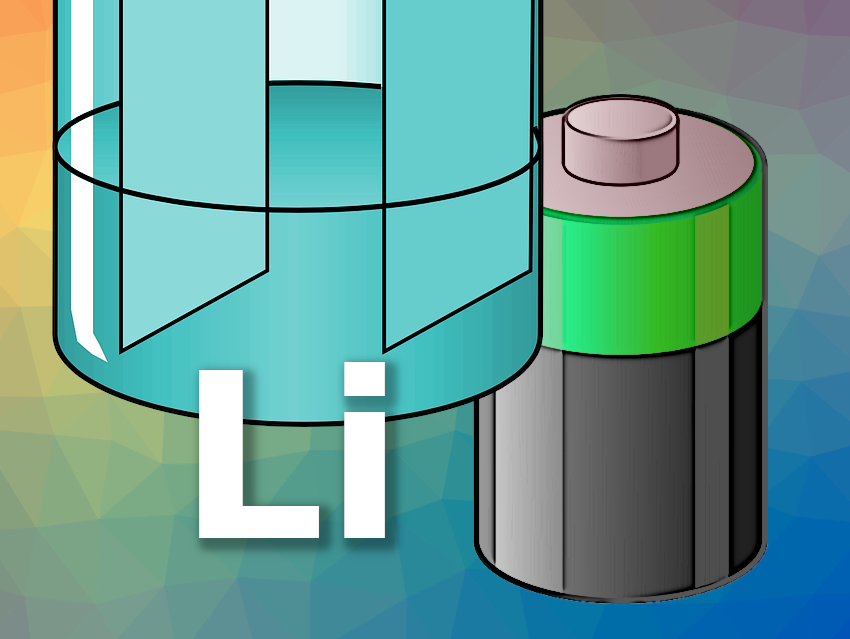The search for ever-more efficient batteries is a major research topic. One of the greatest hindrances to improving the efficiency of lithium-ion batteries is the electrolyte, which is often responsible for slow, inefficient battery performance. Xiulin Fan, Zhejiang University, Hangzhou, China, and colleagues have developed a new set of molecules which, when added to lithium battery electrolytes, overcome the slow kinetics typical of conventional electrolytes.
The team’s strategy is based on adding an “inducer” molecule, causing a small conformational change in the solvated lithium ion and solvent particles that massively lowers the energy needed for the ion to escape the solvent sphere, and thus, speeds up battery reaction kinetics.
The Need to Improve Current Electrolytes
Electrolytes contain polar solvents, salts, and other ingredients and need to strike a balance between efficiently transporting charge—in the form of lithium ions—between cathode and anode, while maintaining stability at these electrodes and suppressing unwanted reactions. The solvents in these electrolytes must be able to dissociate lithium salts, essential for charge transport and the very functioning of the battery. However, the affinity between solvent and lithium salt needed for dissociation also causes a high energy barrier to breaking the interaction between solvent and ion, in other words, to desolvation.
Current solvents are inefficient at overcoming this energy barrier, resulting in unwanted side reactions and the formation of a thick solid electrolyte interphase (SEI) at the electrode interface—a leading cause of shortened life span in lithium batteries. Due to decreasing salt concentrations caused by all the ions “caught up” in these unwanted reactions, conventional solvents become much more susceptible to reduction. This leads to decreased Coulombic efficiency, the ratio of discharge capacity to charge capacity within a battery cycle.
Changing Solvation: From “Dominant” to “Recessive”
Most lithium-ion battery electrolytes function on the principle of “dominant” solvation, where either electron donors or anion receptors from highly polar solvents such as dimethyl carbonate (DMC) directly participate in forming a solvation shell around lithium ions. This leads to the aforementioned high energy barrier to desolvation: The ions are held within the shell in an energetically favorable way and require a lot of energy to break free. This also means that there is not enough lithium salt freely circulating in the solvent to allow for an efficient battery.
The “recessive” solvation utilized by the team, in contrast, involves the use of an “inducer” molecule. This molecule (fluorinated benzenes or halide alkanes) interacts with and activates “recessive” solvents (i.e., solvents that cannot dissociate lithium salts on their own), forming hydrogen bonds that cause the solvent molecules to change shape. These interactions are dynamic, in effect switching the solvent molecules “on” and “off”. It is only in their changed shape that solvation can occur, and this new shape is much more favorable to rapid solvation and desolvation, making it possible to achieve much higher Coulombic efficiencies.
Molecular-Docking Electrolytes
The team refers to the electrolytes containing their inducer molecules as molecular docking electrolytes (MDE). They contain a recessive solvent, an inducer, and a lithium salt, and the name references the “docking” of inducer molecules with solvent molecules by hydrogen bonding to change the shape of the solvent particles. The recessive solvents used in the team’s MDEs were BTE and BTP (1,2-bis(trimethylsilyloxy)ethane and 1,3-bis(trimethylsilyloxy)propane, respectively). These solvents do not dissociate salts unless they are blended with an inducer, and they were chosen due to the flexibility of the molecules, meaning they can “bend” more easily into energetically favorable configurations needed to promote rapid solvation and desolvation.
The team’s blends of recessive solvents and inducers led to dynamic Li+-solvent coordination due to the motion of the inducer around the recessive solvent. Dynamic desolvation helps to prevent continual side reactions at electrode interfaces, extending battery life.
Higher Battery Performance
The Coulombic efficiency of the team’s MDEs was tested using lithium plating/stripping tests, and remained virtually unaffected regardless of the salt concentration in the electrolyte. Over 550 cycles, the team’s cell with an MDE electrolyte had a capacity retention of more than 98 %. The large number of potential inducer molecules proposed by the team (25 examples) also suggests that future battery electrolytes could be tuned to meet different battery requirements, all while outstripping current efficiency levels.
- Molecular-docking electrolytes enable high-voltage lithium battery chemistries,
Baochen Ma, Haikuo Zhang, Ruhong Li, Shuoqing Zhang, Long Chen, Tao Zhou, Jinze Wang, Ruixin Zhang, Shouhong Ding, Xuezhang Xiao, Tao Deng, Lixin Chen, Xiulin Fan,
Nat. Chem. 2024.
https://doi.org/10.1038/s41557-024-01585-y




